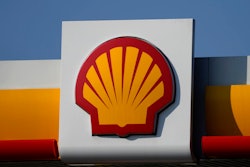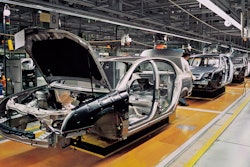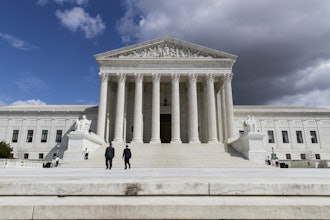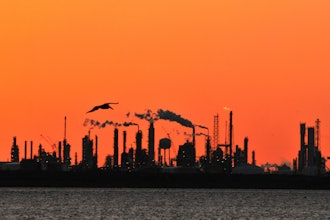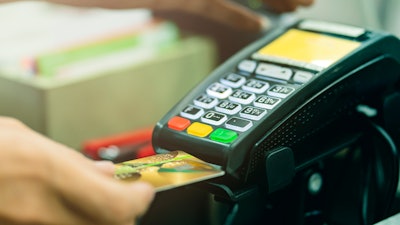
WASHINGTON (AP) — With prices across the economy — from food, gas and rent to cars, airfares and hotel rooms — soaring at their fastest pace in decades, you might think Americans would tap the brakes on spending.
Not so far. Consumers as a whole are showing surprising resilience, not only sustaining their spending but increasing it even after adjusting for inflation. In April, the government said, retail sales outpaced inflation for a fourth straight month. It was a reassuring sign that consumers — the primary drivers of America’s economy — are still providing vital support and helping allay concerns that a recession might be near.
Yet at the same time, there are signs that some people, especially in lower-income households, are starting to cut back, by shifting to lower-priced or alternative items or by skipping some purchases altogether as inflation shrinks their disposable income.
Last week, for example, Walmart, which caters to price-conscious consumers, reported that more of them were favoring lower-cost store brands of lunch meat over pricier national brands and buying half-gallon cartons of milk rather than full gallons. Likewise, Kohl's, a mid-priced department store, said its customers were spending less on each visit.
All of which has spotlighted a question floating over the economy: How long will consumers as a whole continue to spend at healthy levels — even if through gritted teeth — despite the pressures they're feeling from inflation near 40-year highs? The answer will be key to whether the nation can avoid a recession as the Federal Reserve moves to sharply raise borrowing rates.
By most measures, consumers have downshifted from last year’s blowout spending, which was fueled by stimulus checks and other government aid after the brutal pandemic recession. This year, noted Michelle Meyer, chief U.S. economist at the MasterCard Economics Institute, steadily surging prices have dimmed Americans’ outlook for the economy.
Even so, Meyer said, there is some cause for optimism.
"There’s still plenty of reasons to believe in the resilience of the consumer,” she said, pointing to America's robust job market and the solid pay increases many people are receiving. “There is a certain amount of frustration as they navigate the environment we’re in. But they’re still spending.”
Consider that even while consumer sentiment as measured by the University of Michigan plunged nearly 30% over the past year, Americans’ spending outran inflation during that time. Economists at Michigan noted that there has been a “historic disconnect” between sentiment and actual consumer behavior.
Some economists warn that steady consumer spending won't likely last in the face of the Fed's aggressive credit tightening. And if consumer spending does stay strong, the Fed might eventually have to jack up rates even further to cool the economy and slow inflation. Earlier this month, in its quest to quell inflation, the Fed raised its benchmark rate by a half-percentage point and signaled additional large rate hikes to come. Some fear the economy could slide into recession next year.
Still, several trends are driving Americans' spending, including rising pay, savings amassed during the pandemic and a rebound in credit card use. Those savings and continued wage gains, economists say, could fuel healthy spending throughout this year.
Consumers have been shifting much of their spending away from appliances, electronics and exercise equipment — the kinds of goods many splurged on early in the pandemic while hunkered down at home — to travel, entertainment and other services. The intensity of that shift has caught many retailers off guard and contributed to some negative earnings reports.
Brian Cornell, Target's CEO, said that chain “did not expect to see the dramatic shift” in spending away from TVs, appliances and patio furniture and toward luggage, restaurant gift cards and other items that reflect Americans' increased desire to leave home and spend.
Southwest Airlines has said that surging demand for air travel will keep it profitable through this year. Though average fares jumped 32% in the first quarter from a year earlier, the carrier said it's seen no sign of curtailed demand.
For many people, the opportunity to travel after two years of restrictions is outweighing the financial pressures of higher prices.
Mike and Marsha Dyslin, who live in San Jose, flew to Washington, D.C., last week to visit their daughter, Sarah, a graduate student at Georgetown University.
“She’s been out here at school for two years, and we haven’t visited the whole time because of COVID," Marsha Dyslin said. “Your priorities change.”
To save on gas, Mike Dyslin said they've been driving their Toyota Prius more than their SUV but otherwise haven't made major changes in their spending habits.
Soaring gas and food prices have led other consumers, though, to start pulling back. The national average cost of a gallon of gas has jumped to $4.59, up a painful 50%-plus from a year earlier, according to AAA.
Walmart has said its shoppers are visiting its gas stations more frequently but filling up less each time. And Kohl's last week reported a drop in the payment rate for its store cards after a year in which customers made sizable payments. Higher levels of card debt raise the risk of increased delinquencies.
Dan Gabel, a musician in Millbury, Massachusetts, has pared his entertainment spending as costs have soared far beyond what he earns. Gabel, a big-band leader and trombonist, is facing soaring prices not just for gas but also for many items he needs for work — from dry clearing band uniforms to lubricant for maintaining instruments to the cost of paper and ink to print music scores.
To save money, Gabel, 33, and his partner, an opera singer, have dropped HBO and Netflix. Though the music gigs have been steady, Gabel now takes the train, if he can, rather than drive when he performs out of town.
“We're feeling the crunch,” Gabel said. “It's all these little things that do add up.”
Nationally, though, the overall resilience of consumer spending illustrates a trend that can perpetuate inflation: Though people hate higher prices, they often keep paying them if their wages are also rising.
“Inflation doesn’t cure itself,” said Laura Veldkamp, a finance professor at Columbia University. “If the prices of goods and wages rise together, then that doesn’t necessarily bring down demand.”
Across the economy, median wages jumped 6% in April from a year earlier, according to the Federal Reserve Bank of Atlanta. That was the largest increase since 1990, though it was below the inflation rate of 8.3%.
A surprisingly large portion of workers, though, are receiving pay gains that exceed inflation: About 45% did so in March compared with a year earlier, according to research by the Indeed Hiring Lab.
Nick Bunker and AnnElizabeth Konkel, economists at Indeed, called it “remarkable” that that figure was so high given the level of inflation. It shows, they said, how desperate many employers are to find and keep workers with unemployment just 3.6% and posted job openings near record highs.
Many other consumers have had to draw on their savings to keep spending. The national saving rate has fallen to about 6%, below pre-pandemic levels, after having reached 16.6% in 2020, the highest on records dating to 1948, and 12.7% in 2021.
And with more Americans turning to credit cards for spending, household debt rose 8.2% in the first three months of this year compared with a year earlier. It was the biggest such increase since early 2008, when the economy was entering a recession.
Economists say, though, that overall debt hasn’t yet reached problematic levels. They estimate that households still have about $2 trillion in savings beyond what they would have had based on pre-pandemic trends.
And Paul Ashworth, an economist at Capital Economics, notes that household debt is equal to 86% of disposable income, sharply lower than its peak of 116% in 2008.
“Never bet against the U.S. consumer," Ashworth said.




